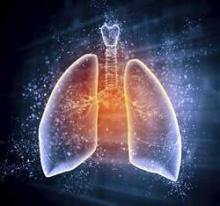In geographic regions of endemic granulomatous lung infections, positron emission tomography combined with fludeoxyglucose F18 did not reliably differentiate benign lung disease from lung cancer, according to a meta-analysis published online Sept. 23 in JAMA.
The average adjusted specificity of FDG-PET was only 61% in regions of endemic infections – 16% lower than in nonendemic regions, reported Stephen A. Deppen, Ph.D., of Vanderbilt University Medical Center, Nashville, Tenn., and his associates. “The accuracy of FDG-PET for diagnosing lung nodules was extremely heterogeneous,” Dr. Deppen and his associates said. “These data do not support the use of FDG-PET to diagnose lung cancer in endemic regions unless an institution achieves test performance accuracy similar to that found in nonendemic regions.”
Several guidelines recommend FDG-PET to noninvasively evaluate patients with lung disease, depending on cancer risk. But granulomas caused by pulmonary tuberculosis, blastomycosis, histoplasmosis, and coccidioidomycosis can challenge diagnosticians by mimicking lung cancer. To assess the ability of FDG-PET to distinguish malignant and benign nodules, the researchers reviewed 70 studies of 8,511 lesions carried out between 2000 and 2014, including 10 studies from regions of endemic lung infections. These studies reported lung infections in the population from which participants were recruited or reported that at least half of benign lesions were infection-related granulomas, the researchers reported (JAMA 2014;312:1227-36).
The average adjusted estimate of specificity in regions with endemic disease was 61% (95% confidence interval, 49%-72%), compared with 77% (95% CI, 73%-80%) for nonendemic regions, the researchers reported.
The study received funding support from the Agency for Healthcare Research and Quality, Veterans Health Administration, National Institutes of Health, and National Cancer Institute. The authors reported having no relevant financial conflicts.


